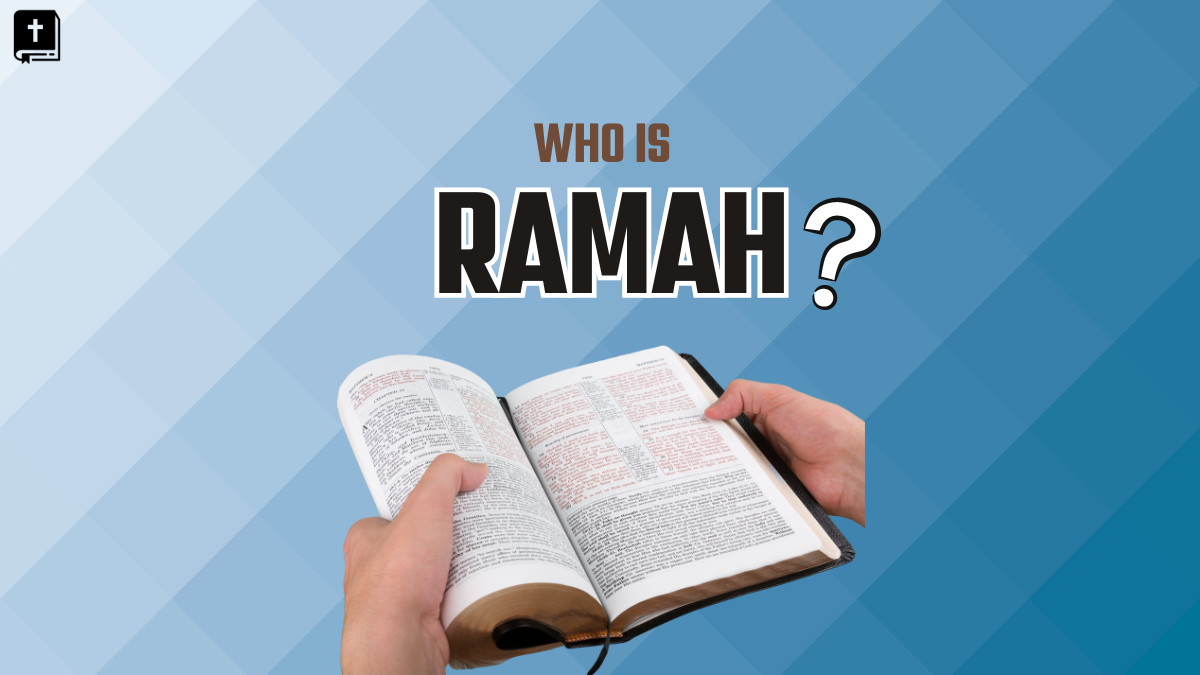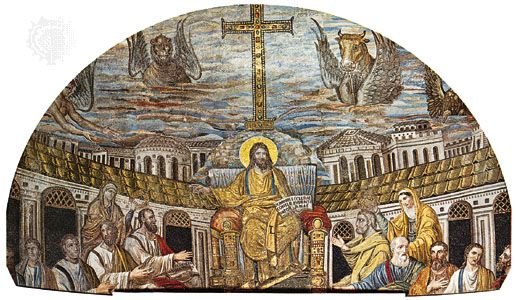What if the name Ramah held more secrets than just being a geographical location in the biblical narrative? Who Is Ramah In The Bible? Ramah is often seen as just a city. But it’s so much more. It’s a place where important events and figures shaped early Israelite history.
The name “Ramah” means “height” or “exalted” place. But its true significance goes way beyond its name. Let’s explore Ramah’s history and see how it played a big part in the Old Testament.
Understanding the Name “Ramah” in Biblical Context
The name “Ramah” is a key term in the Bible, showing up in many places. It means “height” or “exalted” in Hebrew. This makes it important for understanding the Bible better.
In the Old Testament, biblical cities named Ramah are important for big events and stories. They’re not just places on a map. They stand for safety, conflict, and meeting with God. The name Ramah shows they are special spots with a high status and God’s presence.
Looking at all the times Ramah is mentioned helps us see its big role in biblical history. Each mention tells us about the land, people’s lives, and their spiritual journeys back then.
The Significance of Ramah in the Old Testament
The Old Testament Ramah is a key place in Israel’s history. It is known for its connection to important figures like the prophet Samuel. Ramah’s stories are crucial for understanding early Judeo-Christian traditions.
David found safety in Ramah when he was fleeing from King Saul. This shows how vital it was during hard times.
Many historical events in Ramah highlight its importance in the Bible. During the time of judges, it was a center for justice under leaders like Deborah. Later, King Baasha of Israel made it stronger, proving its key role again.
Learning about Ramah helps us see its big impact on the Bible and history. Every mention of Ramah in the Old Testament tells us about the experiences of the Israelites. These stories show how their faith and strength grew over time.
Ramah: The City Associated with the Prophet Samuel
Ramah is a key city in biblical history, known as Samuel’s birthplace. It was where many important events in Samuel’s life took place. This city shows how Samuel helped shape Israel’s early monarchy.
Samuel was a prophet and judge who had a big impact beyond Ramah. He played a big role in key moments, like when Israel got its first kings. Ramah’s link to Samuel is a big part of Israel’s history. It helps us see how religion and government mixed in ancient times.
“Ramah became not just a home for Samuel but a center of prophetic activity, directly affecting the course of the nation.”
Samuel’s work in Ramah had a big effect on the Bible. His prophecies and judgments reached far and wide. Ramah was at the center of these changes. Today, Samuel’s legacy and Ramah’s role inspire scholars and historians.
Who Is Ramah In The Bible
Ramah is a key place in the Old Testament stories. It’s also known as Ramah of Benjamin. This site is important because of its location near Jerusalem. It was a key spot for many events in the Bible.
Ramah of Benjamin: A Key Location
Ramah of Benjamin was a center for justice during the time of the judges. It was a place where important decisions were made. Samuel, who judged the Israelites, often met there.
David also found refuge in Ramah. Its location made it a strategic spot for gatherings and decisions. This made it a crucial part of Israel’s history.
Historical Importance and Events
Many important events happened in Ramah. King Asa fought battles there to protect the area. These events show how Ramah played a big role in Israel’s history.
Prophets mentioned Ramah in their writings. This shows its ongoing importance in Israel’s history and faith. Ramah’s legacy is deep and has shaped the region’s identity.
Other Biblical References to Cities Named Ramah
The Bible talks about several cities named Ramah, each with its own special meaning in Israel’s history. Ramah of Asher and Ramah of Naphtali stand out. They help us understand the geography of biblical times. They also show how the tribes affected Israel’s history.
Ramah of Asher and Ramah of Naphtali
Ramah of Asher and Ramah of Naphtali are key places in the Bible. They tell us about the tribes’ history. Giving these cities to tribes showed how important land was in ancient Israel.
The Book of Joshua talks about Ramah in relation to different tribes. This shows how settlements spread out across the land.
Ramah of Simeon and Its Role
Ramah of Simeon is a desert village in the Negev region. It was a key place for the tribe of Simeon. This city helps us see how the tribe fit into Israel’s society.
The story of Ramah of Simeon tells us about the tribe’s role and the social life back then.
Ramah in Prophetic Literature
Ramah is a key figure in prophetic literature, especially in Jeremiah’s writings. It stands out for its deep emotional themes. In Jeremiah 31:15, Ramah symbolizes deep sorrow as Rachel mourns her children. This image links Ramah to important prophecies about loss and grief.
Jeremiah uses Ramah to show pain and hope. These texts show how sadness can lead to hope. Ramah’s role in Jeremiah’s writings is crucial for expressing deep emotions and spiritual themes in the Bible.
Ramah’s connection to Jeremiah goes beyond its location. It becomes a symbol of human struggles and hopes. Through Ramah, readers see the themes of loss, redemption, and hope in the Bible.
Ramah in the New Testament: The Echo of Jeremiah’s Prophecy
The only mention of Ramah in the New Testament is in Matthew 2:17-18. This passage links to a prophecy from Jeremiah. It shows a deep connection between the old text and Jesus’ early life. The quote is significant because it talks about the sad events after Herod’s decree, which led to many innocent children being killed.
This event in scripture shows the harsh reality of that time. It also fulfills the Jeremiah prophecy fulfillment about the sadness at Ramah.
Ramah stands as a symbol of deep sadness. The words of Jeremiah echo in the New Testament, showing how prophecies can come true in unexpected ways. This shows the ongoing theme of sadness and hope in the Bible.
This prophecy’s fulfillment makes us think deeply about suffering and God’s plan. It makes us consider the stories of historical figures in these scriptures. This helps us see the Ramah reference in the New Testament as crucial to the story of redemption.
Ramah in Popular Culture: Adaptations in Media
Ramah has become a big part of popular culture through movies and TV shows. These stories bring new life to Ramah, showing its deep history and spiritual meaning. In shows like “The Chosen,” Ramah is shown closely with Apostle Thomas, sparking talks about her role and its effects on the story.
Even though Ramah is not mentioned in the Bible, she’s still a big part of media. This lack of mention lets creators use their imagination to bring her to life. These stories change how people see the Bible, giving them a deeper look into its stories and characters.
When people watch these adaptations, they start to think more about characters like Ramah. Her story makes them question old beliefs about the Bible. These stories connect the past with today’s stories, making the Bible more interesting and relevant.
For those who love these stories, there’s a lot to learn about Ramah and Thomas in adapted works. It’s a great way to dive deeper into the stories that shape our understanding of faith.
The Role of Women in Jesus’ Ministry: Possible Representations of Ramah
Women in Jesus’ ministry were key, even if their names aren’t well-known. Ramah symbolizes these important, yet overlooked, people. In shows like “The Chosen,” she highlights the role of female followers who backed Jesus.
Looking into Ramah shows how women supported Jesus, even if they’re not named. These women were crucial in spreading the Gospel’s message. They showed strength and resilience, going beyond what the Bible tells us.
Ramah’s story mirrors the lives of these women. It shows how they worked together with Jesus. Their stories challenge old views by showing women’s big role in big changes. This helps us see the full picture of Jesus’ work.
Ramah’s Legacy in Biblical Scholarship
The Ramah legacy still fascinates scholars and students, reaching far beyond its ancient location. It’s not just a city in the Bible but a key part of understanding history and theology. Scholars see Ramah as crucial for grasping the stories in the Bible.
Studies on Ramah have led to many articles that look at its role in the Bible. They focus on the prophet Samuel and how Ramah connects history with prophecy. This connection helps scholars see its importance in both the Old and New Testaments.
As scholars keep studying, they look at how Ramah is seen in literature and modern media. This shows how different views of Ramah change how we see biblical events and characters today. Ramah’s story keeps adding to theological talks, linking history, prophecy, and culture together.
Conclusion: The Enduring Significance of Ramah
Ramah is a key place in the Bible, known for its geography, history, and spiritual importance. It is the hometown of the prophet Samuel. This place is also linked to themes like mourning, faith, and leadership in many stories.
These stories show a deep history that mixes human stories with God’s plans. This makes Ramah a key spot for important events in the Bible.
Ramah’s impact goes beyond the Old Testament and reaches into the New Testament too. It reminds us of past struggles and victories. This helps us understand biblical prophecy and how it affects our faith today.
In short, Ramah is a symbol with many layers in the Bible. It matters whether we look at its history or its spiritual stories. Ramah’s lasting impact makes us think about how the Bible still shapes our thoughts and studies today.
FAQ
Who Is Ramah In The Bible?
Ramah is a key place in the Old Testament. It’s linked to the prophet Samuel and important events in Israel’s early days. Its location and the events there make it a significant spot in the Bible.
What does the name “Ramah” mean in Hebrew?
“Ramah” means “height” or “exalted” in Hebrew. It often points to high places or spiritual importance in the Bible.
How is Ramah connected to the prophet Samuel?
Samuel was born and buried in Ramah. He was a prophet, judge, and leader in early Israel. His work in Ramah, like anointing Israel’s first kings, greatly influenced the nation.
What major events took place in Ramah?
Samuel judged the Israelites and gave David refuge from King Saul in Ramah. It was also key during the divided monarchy for military and political actions.
Are there other cities named Ramah mentioned in the Bible?
Yes, there are other Ramahs like Ramah of Asher and Ramah of Naphtali. Each has its own significance in Israel’s history.
How is Ramah depicted in prophetic literature?
In prophetic writings, especially Jeremiah, Ramah stands out. It symbolizes mourning and loss, like in Jeremiah 31:15 where Rachel mourns her children.
What is Ramah’s connection to the New Testament?
In the New Testament, Matthew 2:17-18 mentions Ramah, linking it to Jeremiah’s prophecy. This shows Ramah’s ongoing importance and its role in biblical prophecies about Jesus and the early church.
How has Ramah influenced modern culture?
Ramah has been featured in movies and TV shows about the Bible. These stories help people understand its historical and cultural value.
What role do women play in the narrative of Ramah?
In shows like “The Chosen,” Ramah’s characters highlight the important roles of women who supported Jesus. They show the vital parts women played in the Bible.
Why is Ramah considered important in biblical scholarship?
Scholars study Ramah a lot because of its geography, history, and literary presence. This research helps us see its importance in both ancient and modern Bible discussions.

Rockin’ the faith, one verse at a time!
Growing up, the Bible’s stories deeply impacted me. Now, with over 15 years of preaching experience, I blend timeless teachings with modern technology, making them relevant for today’s world.
Bible Hub Verse is my platform to share historical insights and thought-provoking articles, exploring both familiar and uncommon Christian topics. My passion is building a welcoming online space for everyone to learn, grow in their faith, and discover the Bible’s enduring message.
Join the journey!
God bless you.






